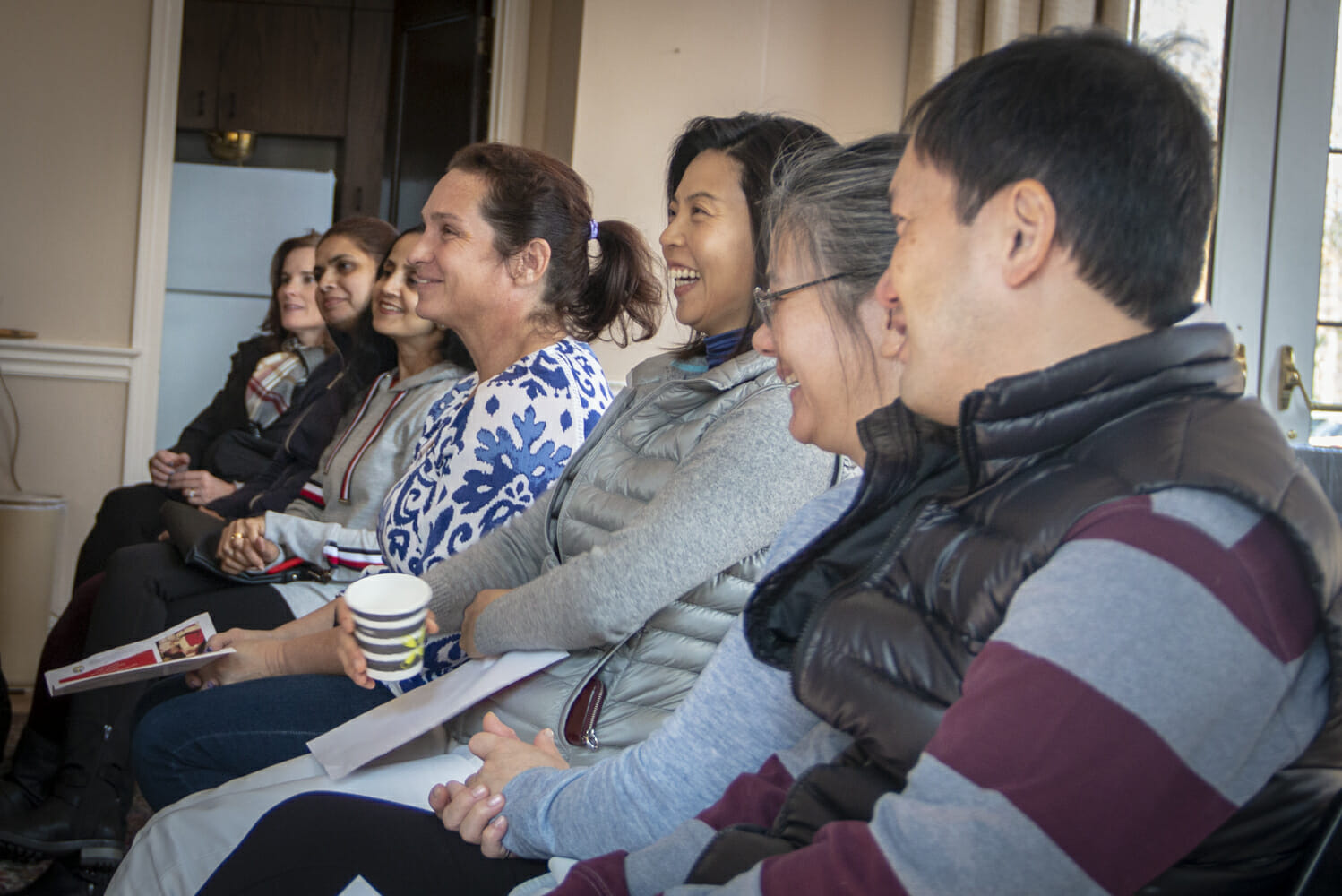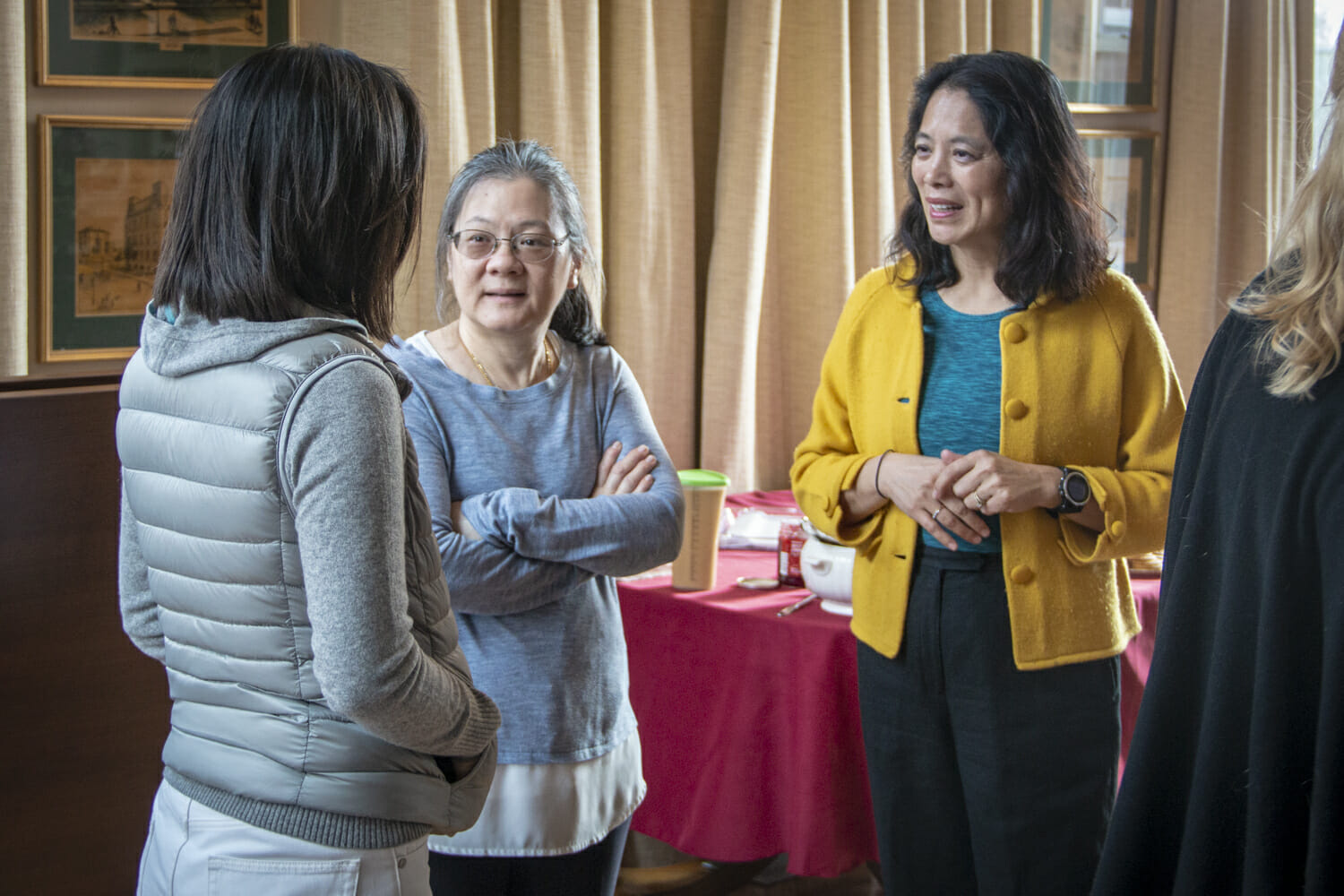MICDS parents and guardians gathered on Monday for another installment of our Passport Series: Christmas in Sweden. The Passport Series invites guests to learn and discuss different countries, cultures, histories, traditions and foods. This time, attendees learned about Christmas in Sweden from MICDS parent Anette Engelhardt. Thank you for presenting, Anette!
Before enjoying some Swedish foods, Anette showcased what a full Christmas celebration entails in Sweden. The holiday in Sweden begins at the end of November with the first advent day and ends 20 days after Christmas with St. Knut’s Day. People begin the holiday by decorating their homes and by hosting Glogg Parties (mulled wine). In December when it is typically dark and cold in Sweden, candles are widely used for decoration.
St. Lucia is celebrated annually on December 13 and was inspired by Lucia of Syracuse (283-304), an Italian saint and martyr. The day is all about bringing light into the darkness of winter. The modern tradition of observance began in the 1700s and involves the eldest daughter in a family dressing up as a “Lucia” in a white dress with a red sash while wearing a wreath of candles on her head. The saint is accompanied by handmaidens who each carry a candle and by star boys
who wear pointed paper hats and carry stars.
Each year, Lucias are chosen in schools, offices and towns; there is even a national Lucia chosen to be drawn around in a carriage to visit hospitals and senior homes. Santa Lucia is celebrated in churches, schools, workplaces and beyond!
Swedes celebrate Christmas on December 24. As part of the celebration, they have a “julbord,” a Christmas table that is a smorgasbord filled with typical Swedish food. The spread includes Christmas ham, pork sausage, an egg and anchovy mixture (gubbröra), herring salad, pickled herring, home-made liver pâté, wort-flavored rye bread (vörtbröd), potatoes and lutfisk, a special fish dish. A traditional julbord is usually eaten in three courses:
- The first course is typically a variety of fish, particularly pickled herring and lox (gravlax).
- The second course is often a selection of cold, sliced meats, the most important cold cut being the Christmas ham (julskinka).
- The third course is usually made of warm dishes (meatballs, jansson, pork ribs, etc).
The seasonal soft drink is called “julmust.” The julbord is accompanied by special Christmas beer as well as strong spirits like schnapps, brännvin or akvavait with or without spices.
After the julbord, all Swedes watch Kalle Anka (Donald Duck) on Christmas Eve together. Historically, Christmas Eve was one of the few nights where cartoons would play on TV. The tradition of watching the same Donald Duck episode on Christmas Eve has continued. After Kalle Anka, Santa or “Jultomten” delivers the Christmas gifts in person. This task is often performed by an old man who secretly dresses up as Jultomten and knocks at the door with a sack of gifts. Many Swedes attend Midnight Mass on December 24 or the early morning Christmas Day service called “Julotta.”
St. Knut’s Day marks the end of the Christmas celebrations. It is also known as dancing out Christmas and is called “Julgrans plundering.” Celebratory activities involve singing and dancing around the Christmas tree, “looting” the tree of ornamental candy and apples, smashing the gingerbread houses into pieces and eating it, opening Christmas crackers that have been used as decorations in the tree, lotteries and a treasure hunt. A favorite tradition is to create a “fiskdamm” (fishing pond) where children will “fish” for toys or candy.
Thank you to all who participated in this Passport Series event. For those embracing the Swedish Christmas customs this season, God Jul (Merry Christmas)!











